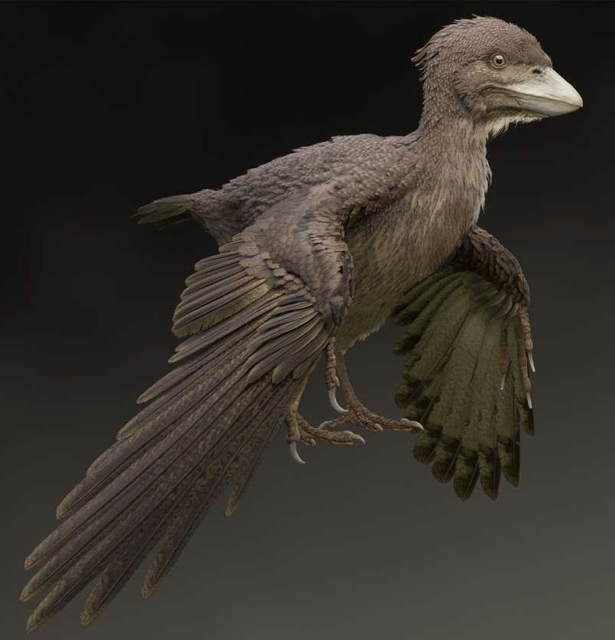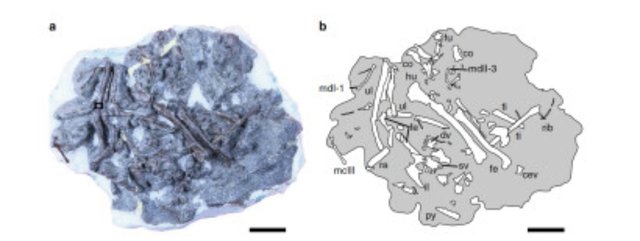Fukuipteryx Prima

Fukuipteryx Prima
Fukuipteryx Prima is an early cretaceous basal bird from Fukui, central Japan. [1]
Discovery
In 2013, the first well-preserved skeleton of an Early Cretaceous bird from Japan was discovered in a block of siltstone at Kitadani Dinosaur Quarry near the city of Katsuyama in Japan’s Fukui Prefecture. Roughly the size of a pigeon, the bird was named Fukuipteryx Prima in a 2019 research paper published by Takuya Imai and his colleagues. The paper describes the new taxonomy and is called "An unusual bird (Theropoda, Avialae) from the Early Cretaceous of Japan suggests complex evolutionary history of basal birds". [2]
Researcher Takuya Imai was astounded by the findings and had to be extra sure that this was a new taxonomy. He told Gizmodo: [3]
"We were so surprised that we did the whole analysis again as we thought we did something wrong.
But it turned out the same no matter how many times we checked our data and methods—the result did not change."
Research And Traits

Fukuipteryx Prima bones
“A couple of theropod dinosaurs (non-avian dinosaurs, such as T. rex and raptors) that apparently did not fly apparently possessed the pygostyle. Studies of Fukuipteryx indicates that the pygostyle evolved at least twice independently during the evolution of birds, once in the lineage of Fukuipteryx and once in the lineage of modern birds. The observation that long-tailed Jeholornis is phylogenetically more advanced than short-tailed Fukuipteryx, together with the presence of pygostyle in non-avian theropods, suggests that the pygostyle was not a ‘must have’ for flight"
Well-preserved bird fossils are relatively rare due to their small size and hollow bones.
Fukuipteryx Prima was the first non-ornithothoracine bird found outside of China. It is exceptional in that it was preserved in 3D form and not a squashed slab as most specimens are. It has features much like the Archaeopteryx, such as fingers tipped with claws. The main difference is the tail of the Fukuipteryx is short and ends in a skeletal structure known as a pygostyle. The pygostole acts as an anchor point for muscle and tail feathers and it's an important trait seen in modern birds that marks their evolution from raptor-like dinosaurs. Fukuipteryx would have only been capable of very limited flight. [1][3]
